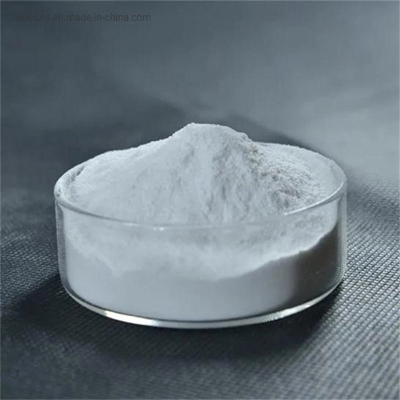-
Categories
-
Pharmaceutical Intermediates
-
Active Pharmaceutical Ingredients
-
Food Additives
- Industrial Coatings
- Agrochemicals
- Dyes and Pigments
- Surfactant
- Flavors and Fragrances
- Chemical Reagents
- Catalyst and Auxiliary
- Natural Products
- Inorganic Chemistry
-
Organic Chemistry
-
Biochemical Engineering
- Analytical Chemistry
- Cosmetic Ingredient
-
Pharmaceutical Intermediates
Promotion
ECHEMI Mall
Wholesale
Weekly Price
Exhibition
News
-
Trade Service
Report: Affected by favorable factors such as a large amount of bacteria in winter and high humidity in the field, wheat stripe rust has a large area, wide range and serious damage in Jianghan, Jianghuai, southern Huanghuai and southwestern wheat regions in China
.
At present, wheat stripe rust has an area of 24.
804 million mu in 419 counties in 12 provinces (cities), an increase of 1.
208 million mu over the same period in 2009 (the year of recurrence)
.
Among them, the disease occurred in 200 counties in Hubei, Henan, Shaanxi, Anhui, Jiangsu, Shanxi, and Shandong, with an area of 18.
932 million mu, an increase of 105 counties and 11.
157 million mu (1.
4 times) over the same period in 2009
.
Wheat stripe rust has a wide range and rapid expansion in the main wheat-producing areas in the east.
It has reached Heze, Shandong and Changzhou, Jiangsu to the east.
The speed of the disease's northward expansion and eastward movement has been significantly accelerated, which is safe for wheat in Huanghuai and North China wheat regions.
The threat of increasing
.
Hubei Province: A common occurrence of wheat growing areas in the province, with an area of 7.
574 million mu in 63 counties in 17 cities (prefectures), with an average diseased leaf rate of 2.
3% and the highest rate of 100%
.
The occurrence of wheat areas in Jianghan Plain is basically stable.
The diseased leaf rate of diseased fields is generally 0.
3%-6.
6% (weighted average 3.
6%).
The diseased leaf rate of re-occurring fields in Gong'an County is as high as 90%; the general diseased leaf rate of diseased fields in eastern Hubei It is 0.
9%-12.
5% (weighted average 4.
8%).
The rate of diseased leaves in re-occurring fields in Huangzhou District is as high as 97%; wheat fields in some mountainous areas in northwestern Hubei are still undergoing new infections, and the general diseased leaves rate of diseased fields is 0.
9%-2.
9 %, the diseased leaf rate of re-occurring fields in Yunyang District reached 100%
.
Henan Province: The disease has further expanded from south to north.
At present, the disease has been seen in 57 counties in 10 cities of Nanyang, Xinyang, Zhumadian, Xuchang, Luohe, Zhoukou, Pingdingshan, Zhengzhou, Sanmenxia, and Luoyang, with an area of 9.
226 million mu, with an average diseased leaf The rate is 5.
4%
.
Among them, the three cities of Xinyang, Nanyang and Zhumadian in the south are in a general epidemic state, and the diseased leaf rate and severity of the serious field reaches 100%.
.
1.
6 million mu occurred in Xinyang City, with an average diseased field rate, diseased leaf rate, and severity of 56%, 8.
7%, and 22.
9%, respectively; 3.
155 million mu occurred in Zhumadian City, with an average diseased field rate, diseased leaf rate, and severity of 38, respectively %, 8.
2% and 22.
1%; 2.
882 million mu occurred in Nanyang City, with an average diseased field rate, diseased leaf rate, and severity of 32%, 4.
7%, and 20%, respectively
.
Xuchang, Luohe, Zhoukou, and Pingdingshan are currently in the stage of spot patching
.
Recently, disease centers or sporadic diseased leaves have been found in Zhengzhou, Sanmenxia, and Luoyang.
The disease was seen in Xingyang and Lingbao near the Yellow River, and the speed of the disease spreading northward was significantly accelerated
.
Shaanxi Province: 1.
829 million mu occurred in 45 counties in 7 cities of Hanzhong, Ankang, Shangluo, Baoji, Xianyang, Xi'an and Weinan
.
Most of southern Shaanxi has entered the epidemic period, with an average diseased field rate of more than 40% and an average diseased leaf rate of 1.
4%-4.
8%.
The diseased leaf rate of reoccurring fields in Lueyang County has reached more than 30%, with an average severity of 40%; Guanzhong Most of them are sporadic or spotted.
Baoji and Xi'an have recently expanded rapidly, and some have entered an extended epidemic period.
The diseased field rate in Baoji City is generally 16%-60%, the diseased leaf rate is 0.
5%-6.
2%, and the average severity is 30%.
-40%.
Xianyang and Weinan have many disease centers and diseased leaves.
The largest disease center in Xingping is 10m2
.
.
At present, wheat stripe rust has an area of 24.
804 million mu in 419 counties in 12 provinces (cities), an increase of 1.
208 million mu over the same period in 2009 (the year of recurrence)
.
Among them, the disease occurred in 200 counties in Hubei, Henan, Shaanxi, Anhui, Jiangsu, Shanxi, and Shandong, with an area of 18.
932 million mu, an increase of 105 counties and 11.
157 million mu (1.
4 times) over the same period in 2009
.
Wheat stripe rust has a wide range and rapid expansion in the main wheat-producing areas in the east.
It has reached Heze, Shandong and Changzhou, Jiangsu to the east.
The speed of the disease's northward expansion and eastward movement has been significantly accelerated, which is safe for wheat in Huanghuai and North China wheat regions.
The threat of increasing
.
Hubei Province: A common occurrence of wheat growing areas in the province, with an area of 7.
574 million mu in 63 counties in 17 cities (prefectures), with an average diseased leaf rate of 2.
3% and the highest rate of 100%
.
The occurrence of wheat areas in Jianghan Plain is basically stable.
The diseased leaf rate of diseased fields is generally 0.
3%-6.
6% (weighted average 3.
6%).
The diseased leaf rate of re-occurring fields in Gong'an County is as high as 90%; the general diseased leaf rate of diseased fields in eastern Hubei It is 0.
9%-12.
5% (weighted average 4.
8%).
The rate of diseased leaves in re-occurring fields in Huangzhou District is as high as 97%; wheat fields in some mountainous areas in northwestern Hubei are still undergoing new infections, and the general diseased leaves rate of diseased fields is 0.
9%-2.
9 %, the diseased leaf rate of re-occurring fields in Yunyang District reached 100%
.
Henan Province: The disease has further expanded from south to north.
At present, the disease has been seen in 57 counties in 10 cities of Nanyang, Xinyang, Zhumadian, Xuchang, Luohe, Zhoukou, Pingdingshan, Zhengzhou, Sanmenxia, and Luoyang, with an area of 9.
226 million mu, with an average diseased leaf The rate is 5.
4%
.
Among them, the three cities of Xinyang, Nanyang and Zhumadian in the south are in a general epidemic state, and the diseased leaf rate and severity of the serious field reaches 100%.
.
1.
6 million mu occurred in Xinyang City, with an average diseased field rate, diseased leaf rate, and severity of 56%, 8.
7%, and 22.
9%, respectively; 3.
155 million mu occurred in Zhumadian City, with an average diseased field rate, diseased leaf rate, and severity of 38, respectively %, 8.
2% and 22.
1%; 2.
882 million mu occurred in Nanyang City, with an average diseased field rate, diseased leaf rate, and severity of 32%, 4.
7%, and 20%, respectively
.
Xuchang, Luohe, Zhoukou, and Pingdingshan are currently in the stage of spot patching
.
Recently, disease centers or sporadic diseased leaves have been found in Zhengzhou, Sanmenxia, and Luoyang.
The disease was seen in Xingyang and Lingbao near the Yellow River, and the speed of the disease spreading northward was significantly accelerated
.
Shaanxi Province: 1.
829 million mu occurred in 45 counties in 7 cities of Hanzhong, Ankang, Shangluo, Baoji, Xianyang, Xi'an and Weinan
.
Most of southern Shaanxi has entered the epidemic period, with an average diseased field rate of more than 40% and an average diseased leaf rate of 1.
4%-4.
8%.
The diseased leaf rate of reoccurring fields in Lueyang County has reached more than 30%, with an average severity of 40%; Guanzhong Most of them are sporadic or spotted.
Baoji and Xi'an have recently expanded rapidly, and some have entered an extended epidemic period.
The diseased field rate in Baoji City is generally 16%-60%, the diseased leaf rate is 0.
5%-6.
2%, and the average severity is 30%.
-40%.
Xianyang and Weinan have many disease centers and diseased leaves.
The largest disease center in Xingping is 10m2
.







